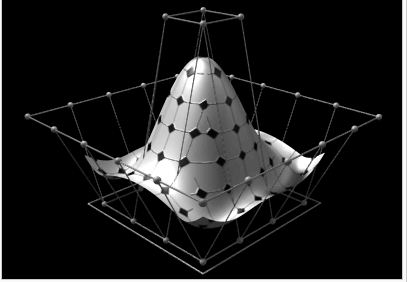Wa are talking about Non-uniform rational B-spline. We have some simple 3 dimensional array like
{1,1,1}
{1,2,3}
{1,3,3}
{2,4,5}
{2,5,6}
{4,4,4}
Which are points from a plane created by some B-spline
How to find control points of spline that created that plane? (I know its a hard task because of weights that need to be calculated but I really hope it is solvable)
For those who did not got idea of question - sorry my writing is bad - we have points that are part of plane rendered here and we need to find control points that form a spline which solution is that rendered plane.

